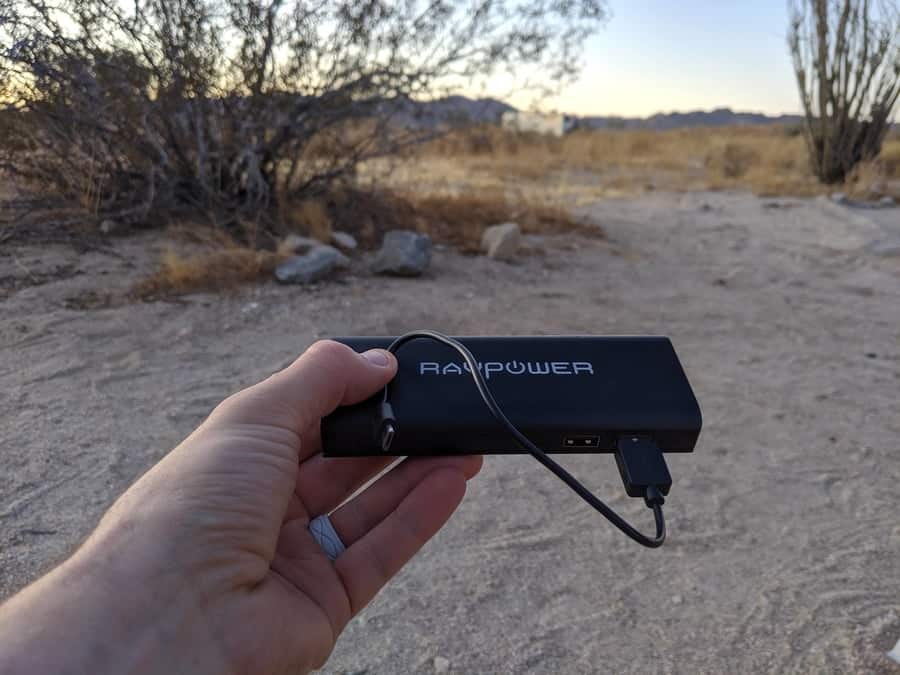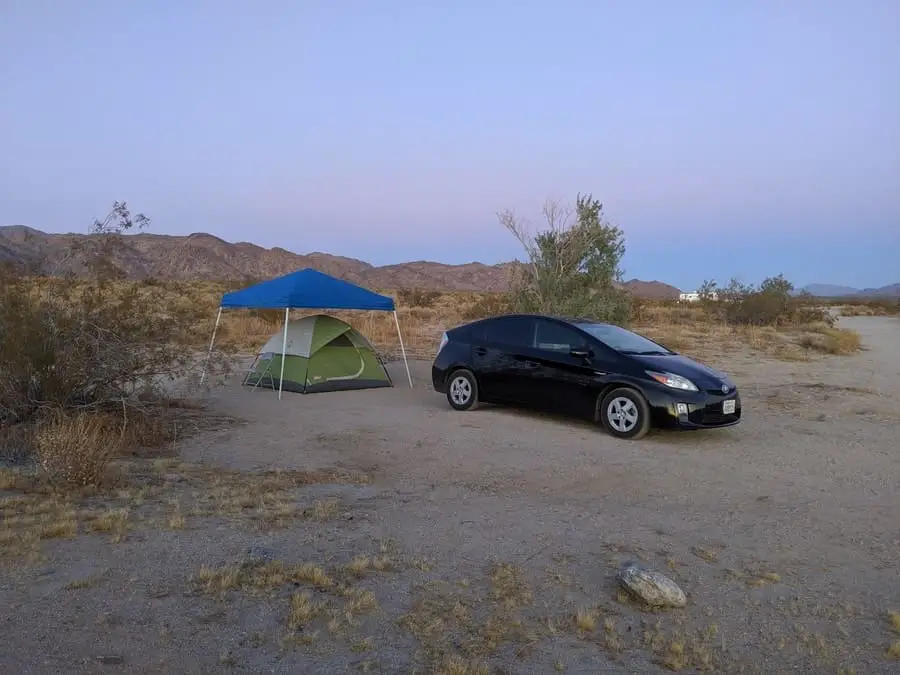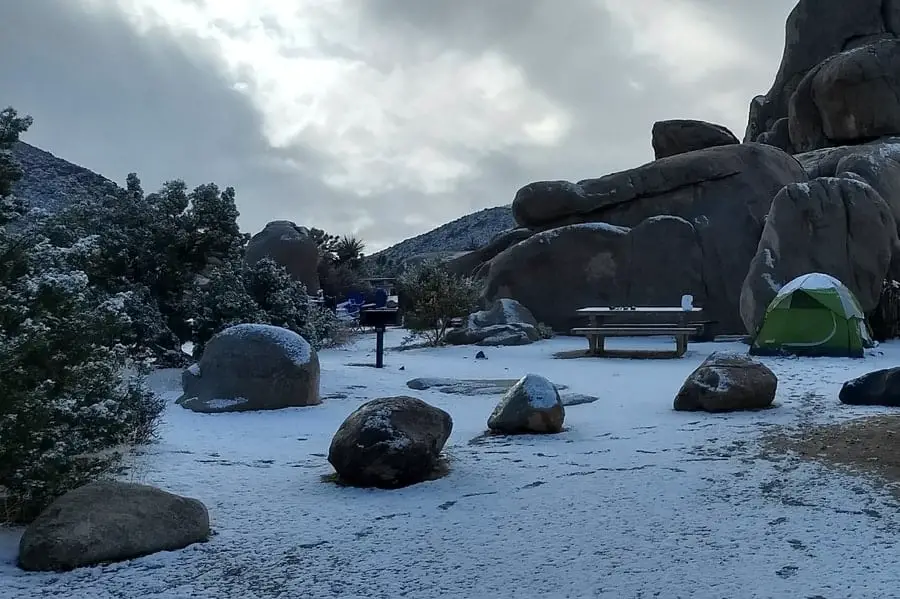
Recently I spent some time camping alone and I used my phone a lot in order to keep myself entertained. Needless to say, I needed a lot of juice for my high phone usage. Keeping your phone charged while camping is easier than you may think.
Here are 12 easy ways to keep your phone charged while camping:
- Use a Portable Power Bank
- Attach An Attachable Battery Pack
- Utilize The Sun Through Solar Power
- Use A Car Charger
- Earn It With A Hand Crank Charger
- Feel The Burn Using A Pedal Powered Generator
- Get Creative With Multi-Use Chargers
- Use A Gas Generator
- Get A Campsite With An Electrical Hook-Up
- Protect Your Phone From Extreme Temperatures
- Reduce the Amount Of Power Your Phone Uses
- Don’t Overcharge Your Phone
Many people might say that turning your phone off is the best way to experience camping. However, cell phones are still useful even if you don’t have cellular service available where you are camping. For example, they can be used to take pictures, play games, and listen to music offline. Even if you’re not using your phone as much while you are camping, it’s still important to keep it charged so that you can use it when you need to.
By the way, If you are in the market for a new tent, then you should click here to see the one I recommend on Amazon.
1. Portable Power Banks
One of the simplest ways to keep your phone charged while camping is to invest in a portable charger. There are various kinds of portable chargers to choose from. Make sure to check the amount of charge a portable charger can hold so that it is suitable for your needs. Some chargers can only hold a single-use while others can hold multiple. Many devices now have convenient indicators that let you know how much battery life you have left and when you need to charge them.
Always make sure to keep your portable batteries fully charged before heading out on a long camping trip. If you are camping with others then you might not want to let them know you have a portable charger because then everyone will want to use it. This is the option that I personally use on a regular basis when car camping.
2. Attachable Battery Pack
These convenient batteries attach directly to your phone and can often hold just as much electricity as portable power banks. There are a variety of attachable batteries that can attach to the outside of your phone in a multitude of ways. They also come in various sizes so finding one that best fits your phone is fairly simple. Having the battery attached directly to your phone makes it easy to keep track of and makes it difficult to lose.
The only risk that comes with these devices is remembering to unplug, remove or turn off the additional battery once it’s finished charging so that your phone doesn’t over-charge and the battery pack doesn’t lose power unnecessarily. Many new versions of the attachable battery pack now come with off buttons or turn off automatically once your phone is fully charged in order to help prevent over-charging.
3. Solar Power
Solar panels use UV rays from the sun to generate electricity. Solar panels are now more accessible than ever with more versatile and portable versions for camping coming out every year. There are even solar panels you can plug your device directly into via USB cable. These devices are usually a favorite for backpackers because they can be charged while hiking or anywhere a sunny spot is available. There are various kinds of solar panels that allow you to charge your devices conveniently, such as ones you can hook to the outside of your backpack while you are hiking or ones that you can just leave on the ground.
They can also come in a variety of sizes, from long and thin, small and square, or even big enough to power an RV. The only downfall with these chargers is that if there is no sunlight then that means less power. It may take several hours for your solar panel to charge even on a particularly sunny day. However, if you are camping during a sunny time of the year like in the summer then you shouldn’t have any difficulty keeping your phone or other devices charged.
4. Car Charger

Many people have already purchased a car charger or have one built into their car. These chargers plug directly into the lighter socket for their power but many newer cars have USB outlets installed into the dashboard of the car making it even easier to keep your phone charged while driving.
Car chargers are perfect if you’re camping in a place where you have to drive often. A perfect camping opportunity to utilize your car charger is when you’re camping in National Parks. This is because you often have to drive from your campsite to your sightseeing destination which may be several miles away and provide just the right amount of time to charge your phone.
There are various kinds of car chargers to choose from, some provide more wattage than others, so if you want to charge your phone quickly then you may want to invest in a higher quality charger. Car chargers with AC Outlets can also help you charge your phone faster and they can charge your portable battery packs.
5. Crank-Powered Charger
Crank-powered chargers are usually handheld devices that you can charge by hand. They are great for backpacking because you don’t have to rely on electricity or even sunlight to keep them charged. They are often lightweight and can easily be recharged at any time.
However, you will have to take some time out of your day to re-charge them by hand which can be tedious depending on how much of a charge you need and how much effort is required to power it. Crank-powered chargers also work as backup chargers in case your other charging devices stop working. There are large and handheld versions of these, so you will need to find the type that works best for your situation.
6. Pedal Powered Generator
These are a little outdated, but if they fit your idea of a good time then go for it. They are another man-powered electrical charging device like the crank-powered charger. They are often larger and more expensive than crank-powered chargers, but it does provide more wattage. These are more recognized for being emergency generators.
7. Multi-Use Chargers
There are devices you can get that also double as chargers. For example, some lamps, speakers, and flashlights are also capable of charging devices. These two-in-one devices can be convenient for those who are camping light or backpacking because it’s one less item you have to bring. Remember though that these dual-use chargers may use a lot of power to operate. It may be more convenient to get devices that can also be charged by solar power or hand-cranked.
8. Gas Generator
This type of power generator may be louder than most but it produces a lot of energy that you can use to power more than just your phone. If you are using a gas generator just to power your phone then you might get some funny looks, but go ahead and do what you do.
The only rule with gas generators is that most campsites require that you run them during certain hours of the day. Usually, after nightfall, gas generators need to be turned off because of the noise they produce. Typically, generator use hours fall somewhere in line with quiet hours at campgrounds. Oftentimes, generator hours are even more strict than standard quiet hours, so keep the rules in mind if you are going to use a generator.
9. Campsites With Electrical Hook-Ups
Electrical Hook-ups are provided for RV and motorhome use and often require more than just a grounded plug in order to be useful. If you are planning on camping in an RV or motorhome and want to save your gas or RV battery, hooking up to an electrical outlet will provide you with more power at less risk to your vehicle. Just make sure to follow all proper procedures for hooking up your RV to an electrical hook-up and make sure you have all the necessary equipment to do so.
If you don’t have an RV, then don’t worry, there are ways in which tent campers can utilize electrical hook-ups. There are specialized tent hook-ups that can be bought and used similarly to how RV’s use the electrical outlets at a campsite. You may have to reserve an RV spot within the campground you are planning to visit in order to utilize this power however it’s easy to do so and you won’t be penalized for tent camping in an RV area in most campsites.
Some camps also have smaller electrical outlets available for tent-only campsites. For example, some KOA campsites offer electrical plugs that you can use to charge your devices. Electrical hookups are more commonly found at privately-owned campgrounds. Although, some state parks also provide electrical hook-ups. National Parks on the other hand rarely have electric hook-ups in order to minimize development on the precious natural land.
Speaking of campsites, did you know that some campsites let you sleep in your car and some disallow it? Click here to read my full article on the legalities of sleeping in your car when you go camping.
10. Protect Your Phone From Extreme Temperatures

In colder temperatures, you may find your phone dying quicker. This is because your phone’s battery operates better at room temperatures. Cold environments make your phone produce more energy so it can continue to operate. The best way to avoid keeping your phone from getting cold is by keeping it in a warm location. This could be somewhere in your clothes or inside of a backpack wrapped up in something warm like a jacket or any other additional clothing you may bring with you.
At night when temperatures can drop really low, keeping your phone inside your sleeping bag with you will prevent the battery from dying as fast as it would if you left it outside of your sleeping bag.
In extremely hot environments, make sure to keep your phone out of the sun. This is because when most phones overheat they automatically go into an unusable state until they cool down. This can be inconvenient if you planned on using it to snap a photo or make an emergency call.
Overheating or extreme cooling of your phone also affects the life of your battery and constant exposure to extreme temperatures could ruin your device. However, your phone is not the only thing that needs protection from the elements. Even your tent should be protected from the sun if you can help it. Click here to read my full guide to protecting your tent from the sun in order to make it last much longer!
11. Reduce the Amount of Power Your Phone Uses
Even if you don’t use your phone while camping you might notice that your battery diminishes pretty quickly. This is because your phone is continuing to do things even when you’re not on it. When you don’t have cellular service, your phone continues to actively search for service as long as you keep your data on. Also if your phone does find service while you’re camping, it uses the opportunity to update apps or bring you messages.
The best way to keep your phone from using too much power while camping is to either turn it off or place it on airplane mode. The latter option may be best for those who still want to take photos, play games, listen to music, or do other offline tasks while camping but don’t want to go back and forth turning your phone on and off. Airplane mode turns off Wi-Fi and cellular services and it also keeps your phone from roaming for these services, thus saving a lot of juice that would otherwise be used to run those tasks.
Turning down the screen brightness on your phone is another way to save your phone’s battery. At night, it might be best to turn your phone off completely. This will prevent it from using unnecessary power to keep the phone on especially in colder conditions where lower temperatures eat up battery life. Besides, let’s face it. You don’t need an alarm when you are camping, waking up to the sun is the best alarm there is.
12. Don’t Overcharge Your Phone
It’s really easy to leave your phone plugged in even though it’s fully charged, but doing so actually diminishes the life of your phone’s battery. Remembering to unplug your phone after it’s charged can preserve your phone’s battery life in the long run, and thus prevent it from dying as quickly. Remember to utilize this advice at all times when you’re charging your phone, not just when you are camping.
Related Questions:
How Do You Keep Your Phone Charged While Hiking?
The best way to keep your phone charged while hiking is to use a portable power bank, an attachable battery pack, a portable solar charger, or a small hand crank charger. In that order from most ideal to least ideal.
Do Solar Phone Chargers Really Work?
Those small solar phone chargers take many hours to fully charge and that is in ideal sunny conditions. Make sure that you have a backup charger for your phone just in case a solar phone charger does not collect enough energy.
My Favorite Camping Gear
- Air Mattress: click here
 to check out my favorite on Amazon.
to check out my favorite on Amazon. - Tent: click here
 to see my favorite tent available on Amazon.
to see my favorite tent available on Amazon. - Sleeping Pad: click here
 to check out the one I love on Amazon.
to check out the one I love on Amazon. - Sleeping Bag: click here
 to see the one I recommend on Amazon.
to see the one I recommend on Amazon. - Camping Stove: click here
 to see the best camping stove on Amazon.
to see the best camping stove on Amazon.

